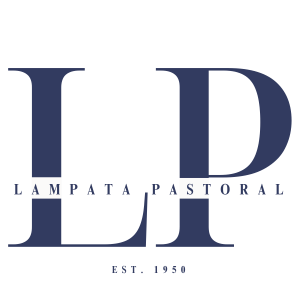For Eyre Peninsula croppers, Ray, Aileen Elleway and their son David, sheep play a very important part in their overall property plan and income surety.
“Cropping and sheep are very compatible and with sheep we have always got something we can sell at any time for cash flow if needed, but we mostly use the sheep enterprise to manage our income flow,” Ray Elleway said.
The Elleways farm their ‘Ellebrook’ property of 4250 hectares situated an equal distance from Cleve and Lock on Eyre Peninsula. In conjunction with the cropping they run a self-replacing Poll Merino flock comprising 1050 mature breeding ewes plus hoggets. The Elleways’ sheep flock selection is based on productivity and ease of management principles. They run bigger framed, plain bodied, active and fertile sheep producing 21 to 22 micron wools, and plenty of it.
“We try to stick with sheep that fit these breeding objectives; that put out consistent high quality meat and wool. We want evenness and consistency,” Ray said. Ray and family select their rams from the Pocock family’s Lampata stud based at Lameroo.
“Initially we looked around at options. I went on a study tour that involved a visit to Jim Pocock’s place. He was a pioneer in measurement and we bought a few of his Panlatinga rams and the enterprise has progressed from there really,” Ray said. “When Panlatinga ceased ram breeding we looked around again before settling on Lampata. They have the same bloodlines and selection policies and we noticed their sheep did very well, particularly in the Lameroo off-shears sale yards on a regular basis, so we figured they must be doing something right. They are good people with a real passion for sheep and a belief in what they are doing,” Ray said.
During peak workload periods for cropping the Elleways easy care sheep virtually look after themselves, while the sheep enterprise peak work requirements are timed for cropping downtime periods. Their ewes are mated in November for an April lambing. They run their ewes in small mobs of 150 ewes and mate with the rams at a rate of 2% minimum.
“This is done to get a higher lambing percentage. We also get better feed utilisation as they don’t trample the feed as much in smaller mobs and we get less dust which affects wool yields,” Ray said. “We got 100% lambing in 1985 for the first time under this policy and have never been under it since, while our wool yields are consistently around 64 to 65%. They have been as high as 68% and down to a low of 62% in one very poor year,” he said.
The ewe lambs are all kept through and classed at 15 months of age at the annual July shearing. The replacements are kept on and the balance is sold off post shearing to other breeders. The wether lambs are shorn at 10 to 11 months of age before they cut their teeth. They are sold on hooks to Thomas Foods, this year getting $5.40/kg.
“Fed well, they do just as well as crossbreds. We are paid on weight so we might as well get as much as we can and you get the wool as a bonus. I’ve always believed that it never pays to sell your wool through the saleyards,” he added.
“The average flock micron is 21 to 22 and the wool values were only about 100 cents/kg below the very supply sensitive 18 micron range market. The finer sheep tend to cut about a kilo to a kilo and a half below our 6.5 to 7 kg/head so to me that doesn’t make economic sense. The finer sheep are generally lacking the frame and body weight and constitution of the sheep we have. We produce consistently good meat and wool products and receive a consistently good price. I know what I’d rather have,” Ray said.
To achieve these productive sheep the Elleways take a lot of care in their ram selections. They use measurement figures as a selection tool, taking particular notice of bodyweight clean fleece weight and microns, but overall are seeking a good balance of figures. Twinning also carries a lot of weight in their selections but they said everything else has to be right.
The Elleways have full confidence in their sheep enterprise as an important income stream.
“We appreciate how well our sheep enterprise allows us to maximise and even out our income flow. We sell our wool when we need to and market signals are good, not just when we harvest it,” Ray concluded.

